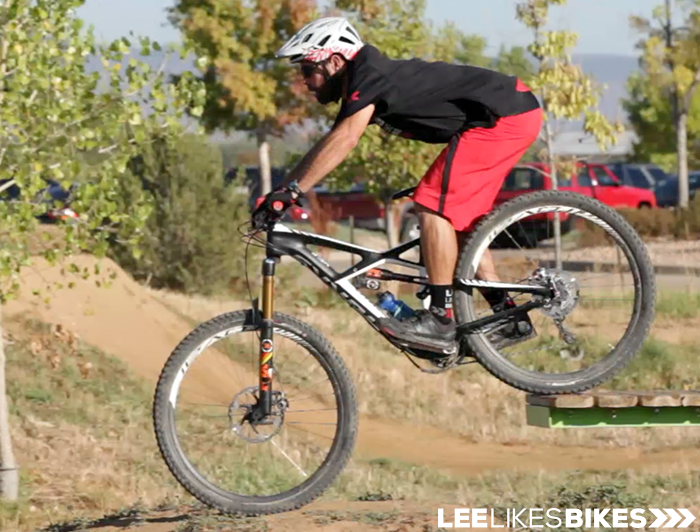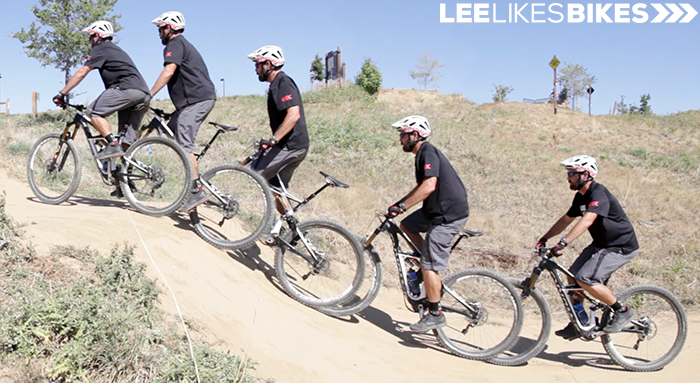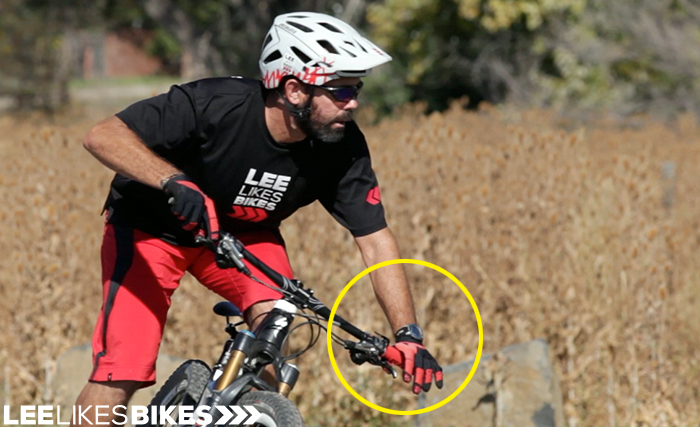Thinking critically about bike-geometry BS

This press release on Pinkbike about Ragley’s 2017 line contains an explanation of Ragley’s geometry.
I like Pinkbike, and Ragley strikes me as a cool company that makes awesome bikes. That said, we’re hearing similar geometry claims more and more, and I don’t think they all make sense.
Ragley Trail Geometry Explained
Quoted from the Pinkbike post.
Longer front triangles and shorter stems: All Models are 15-20mm Longer in Reach Vs. MY2016:
a. The riders arms are moved forward opening up the lungs to make breathing easier
b. Gives the rider more room to move around, stay in control and makes it much harder to go over the handlebars.
c. It lengthens the wheelbase to increase stability at speed and over technical terrain.
d. Moves rider weight forward to load the front wheel giving better traction in corners and helps to keep the front wheel on the ground when climbing steeper sections.
Let’s think about this
A. Longer front ends improve breathing
Dunno about that. When the doctor puts a stethoscope on your back and tells you to take a deep breath, does he also tell you to reach your arms forward?
You know what really helps breathing? Good posture, meaning clean hip/spine alignment and core integrity. You can do that on any bike. Heck, you can (and should) do that when you’re not on a bike.

Arms in various positions. Breathing the whole way.
B. Longer front ends improve control
There is indeed more space between the rider and the bars, which theoretically lets the rider move farther before slamming into the bars.
But the farther the bars are from your shoulders, the less range of motion you have with the bars. This limits your ability to brake, corner and go down steep things.
While the longer front end might make it harder to go over the handlebars on flat ground, it might pull an average rider farther forward in the steeps, which might encourage the body to go over the bars.

On this bike and ledge, it’s easy to balance on the feet while pushing the front end down to meet the ground. A longer front end would require more arm range, which would make it trickier to ride this ledge perfectly and limit the height of the ledge you can ride safely.
C. Longer wheelbase is more stable
OK.
D. Longer front end moves rider weight forward
You hear this all the time, even from smart people, but I think this claim assumes the rider is inert.
According to this theory, the human body is in some fixed position, with a certain amount of weight on the seat and/or pedals and the rest of the weight on the bars. Following this thinking, a longer front end would put a greater percentage of the rider’s weight on the bars and, by extension, the front wheel.
But I don’t think we should be inert while riding. Whether we’re in the saddle or on our feet, we have the ability to lean forward with weight on the bars, hover with no weight on the bars or lean backward and pull on the bars. You can shift your weight through a wide range with any reasonable bike setup. This, as you might have noticed, has a huge impact on the way your bike rides.
In my opinion, your weight should be supported by your feet, not your hands. Maintaining heavy feet and light hands is, again, all about hip/spine alignment and core integrity.

Cornering with zero weight on the hands.
People who make these kind of geometry claims seem to understand riding differently than I do. And that’s fine. Do your own thinking. Believe whatever makes sense to you.
The perfect bike setup helps you spend more time in a perfect, easy riding position, and it helps you make your bike do awesome things. I’ve developed a logical and massively effective way to determine your ideal bike setup for peak power and optimal handling. Dial in your bike for your body and riding style at the LLB online MTB school.
Have fun out there,
Lee
Know more. Have more fun!
Join the leelikesbikes mailing list:

Leave a Reply
Want to join the discussion?Feel free to contribute!